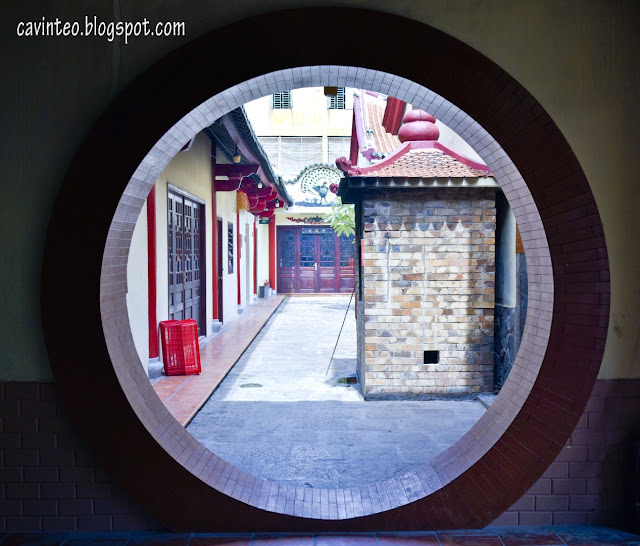I visited no less than three temples in one single day when I was at Ho Chi Minh City (HCMC) last October and this one, known as Ong Bon / Nhi Phu Temple appeared to be the most simplistic in terms of design, with a huge yard that took up half of its space.
So many Chinese characters and it talked about the history of the temple, said to be the oldest in HCMC, including the timeline for renovation and its eventual recognition as national heritage in 1998.
Let's step in for a better look! Very typical Chinese temples setup although I did realize that in Vietnam, there were many wooden plaques that were hung up. I might be proficient in Chinese but more for basic conversation instead of deep knowledge in couplets and the 4-character Chinese idiomatic expression known as 成語.
Patron Deity - Tua Pek Kong! Interestingly, while this Chinese god is commonly honored in Singapore and Malaysia, it's almost non-existent in China. Many legends around and you can refer to more information here.
Altars by the sides of Tua Pek Kong; I don't know who they are but noted from the many-character plaque on photo two that one of them is Tai Sui.
2D artwork with 3D feel - one shows a temple procession with dragon dance whereas the other one was a "portrait" of Erlang Shen, a three-eyed deity most famously portrayed in Journey to the West, as the person who can fight on par with the Monkey King.
Ancient looking bell.
Side altars; first picture showed the God of War, Guan Gong and the second one was lady of birth, said to have the powers to smoothen the pregnancy of ladies.
Perfectly circular doorways leading to the back.
Wall murals showing scenes from the Journey to the West; easily recognizable given the mix of one monkey, one pig and two humans (although one of them was supposed to be a river monster).
And here's the enlightened monkey god!
Main altar at the back which worshiped the Jade Emperor, supreme leader for Taoism. My impression of him wasn't positive though as he was shown as being a relatively weak yet proud leader in Journey to the West.
To the sides of the Jade Emperor are Siddhartha Gautama Buddha and Guanyin Bodhisattva; from Buddhism; a good example where two different faiths can come together so seamlessly. When I was young, I don't even know if I was a Buddhist or Taoist since it appeared I was both.
The huge wall mural with the four heavenly kings; I bet many Chinese assume they were from Taoism. However, they were Buddhist and you can read more about them here.
Pond with a water fountain in the form a weird looking dragon.
It had a head of the dragon, with a body of a fish.
Pricelist for the offerings. Despite being introduced to these offerings since young, I never quite believed in lighting joss sticks and burning papers to show my faith in the religion. What matters most would be how you carry yourself as a person.
Last look of this temple said to be over 300 years ago.
Back to exploring the rest of Chinatown at HCMC. Kudos to Alex, as he doesn't enjoy religious abodes, unless they are air-conditioned, and it's a feat for him to come with us!
=====
264 Đ. Hải Thượng Lãn Ông, Phường 14,
Quận 5, Thành phố Hồ Chí Minh, Vietnam
Map
As above.




























%20-%20Pearl%20of%20the%20Far%20East%20@%20Vietnam%20.JPG)
No comments:
Post a Comment